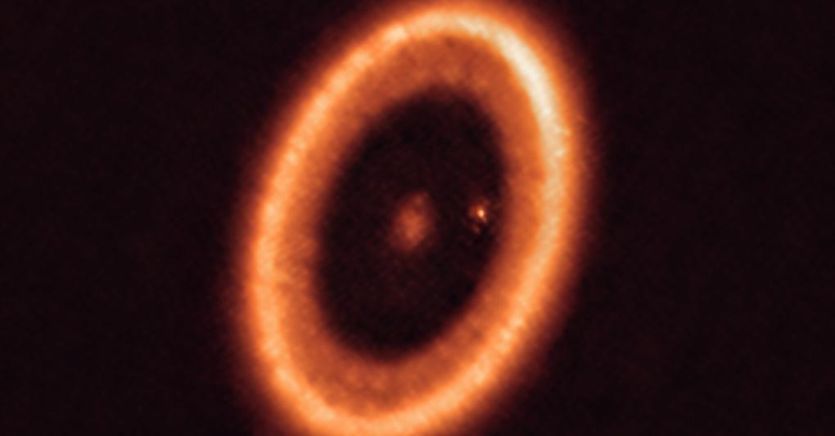We now know several thousand planets around distant stars, so much so that we can say that the formation of stars in the Universe is practically always accompanied by the formation of planetary systems.
As always when knowledge of phenomena suddenly increases, and their number, at the moment astronomers are not too sure of their theories in the field of planets and their satellites. The reason is simple: until 1995 we had only one example of a solar system, now we have thousands and many different from each other.
Also for the formation of the satellites of the planets, as in this case, we are not very sure, for example for our Moon we think that the formation did not take place in a calm way as in the case we are describing, but that it was a frightening collision. cosmic between our Earth, not yet fully formed, and a smaller planet, fortunately, but still large even as Mars that would have torn a substantial part of terrestrial material and would have thrown it into space, from this clash it would have been born to our Moon.
The Italian participation
The hypothesis is supported by consistent evidence we have, on Earth, of this huge cosmic clash in the distant past. Italy, which participated in the construction of the 66 parabolas that pick up the millimeter signal from space, has always been very active, however, also in the field of research and study of alien solar systems.
Two specialized European astronomical satellite-observatories were in fact conceived in Italy by our astrophysicists. One of these, Cheops its acronym, is already in space and has been producing measurements and discovering exoplanets for months. “Cheops takes detailed measurements of planets, reveals extreme temperatures of their atmospheres, adds new planets to systems that already knew each other and are now better defined,” explains Roberto Ragazzoni, University of Padua and National Institute of Astrophysics, who designed the optical system of this European observatory satellite as well as the revolutionary one of another European satellite, with an Italian heart, Plato, which is being tested on the ground.
